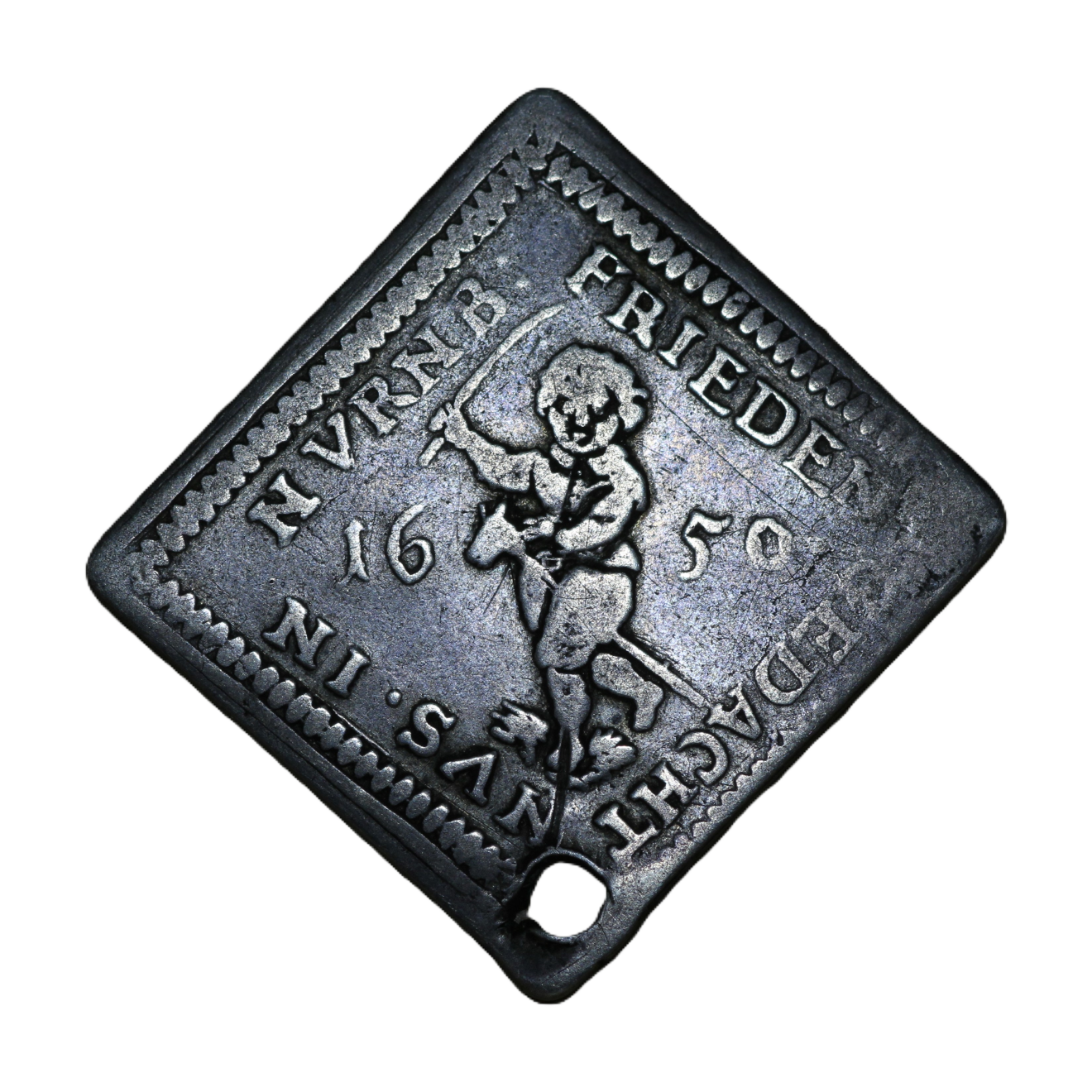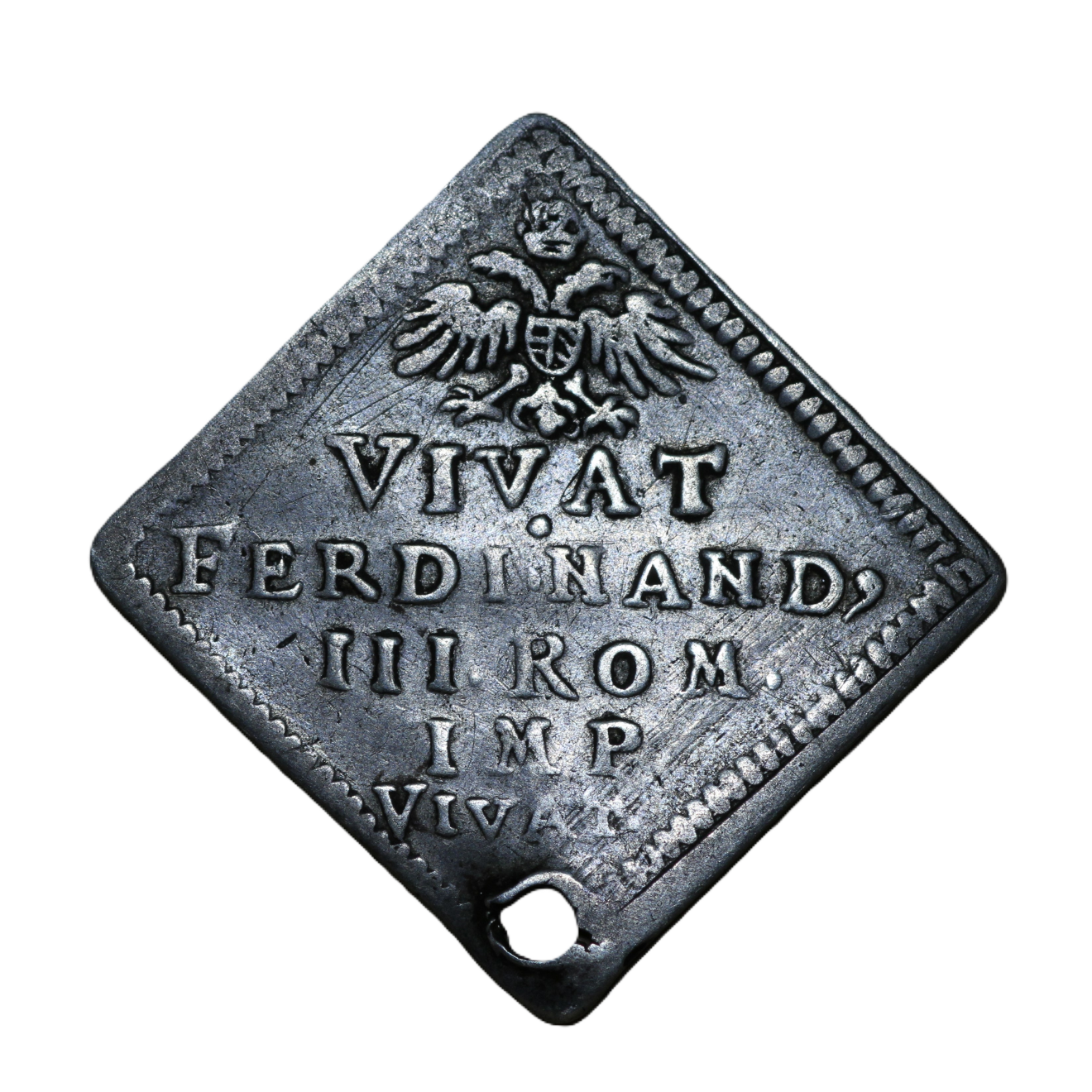

1/8 Thaler
Free imperial city of Nuremberg
1650
Composition: Silver
Weight: 2.71g
Length by Width: 20.9 x 21.7mm
Thickness: 0.7mm
Ferdinand III, Holy Roman Emperor
House: Habsburg
Born 1608 - Died 1657
|
This coin features a boy riding a stick horse, holding a riding crop. It was minted to commemorate the end of The Thirty Years' War. The Thirty Years' War was one of the longest and most destructive conflicts in European history, lasting from 1618 to 1648. Fought primarily in Central Europe, an estimated 4.5 to 8 million soldiers and civilians died. 1618 to 1635 was mainly a civil war between German states within the Holy Roman Empire. France, Sweden, and Spain had larger roles after 1635. The Peace of Westphalia is the collective name for two peace treaties signed in October 1648. A diplomatic congress was convened in Nuremberg in the Spring of 1649 to address the mechanics of implementing the treaties. Negotiations began in April 1649, centering around the King of Sweden and the Holy Roman Emperor. France, Spain, and the German states held secondary roles. The final treaty was signed on June 16, 1650. A number of coins were issued in Nuremberg to commemorate the peace: 1/2, 1/4, and 1/8 Klippe Thalers. A klippe is a word of Swedish origin (to shear) referring to a coin struck by a hammer on an irregularly shaped flan. These were initially made for emergency currency by cities under siege in the 1500s. They were later used for commemorative coins. It is said that a group of boys rode their stick horses to the delegate appointed by Emperor Ferdinand III, asking him for a way to commemorate the peace. These 1/8 thalers were minted as a result. |
Ferdinand III Ascended the throne in 1637, after his father Ferdinand II died. He was Emperor for the last decade of The Thirty Years' War. His successor to the throne was his son, Leopold I. The throne of the Holy Roman Empire was continuously occupied by the Habsburgs from 1440 until the mid 1700s. |